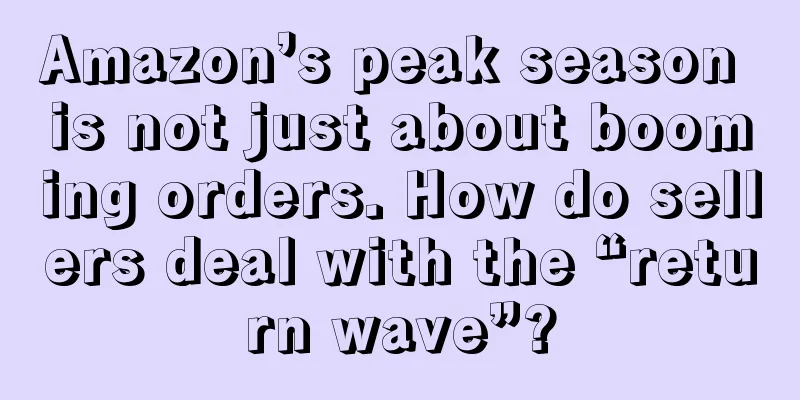Amazon's Q4 peak season is approaching, and sellers will not only see a surge in orders, but also returns. As an FBA seller, there are some important steps you must take to protect your seller account when encountering returns, otherwise there may be some serious consequences.
Six important steps to process Amazon product returns
1. Record the return notification email from Amazon
When a customer returns a product via Prime shipping, Amazon issues the refund immediately without having to wait for the product to be returned. Amazon will notify you that the refund has been removed from your account. You should create a folder in your email application to keep these emails to record each refund and verify that the buyer has returned the item within 45 days.
2. If you find that the buyer has not returned the product within 45 days, please apply for a refund from Amazon.
After requesting a return, the buyer has 45 days to return the product to Amazon. If the buyer does not return the product after receiving a refund, the seller will receive a refund from Amazon.
But Amazon usually does not give sellers a full refund, and Amazon often forgets to refund sellers in full due to negligence. Once this happens, the seller can file a complaint in Seller Support and ask Amazon for compensation.
3. Actively contact buyers to reduce negative reviews
One of the first things some buyers do after requesting a refund is write a review. ing buyers promptly and personally apologizing for a customer’s negative shopping experience can go a long way toward reducing negative reviews.
For example, you could send a message like this to your buyer:
“Amazon just notified me that you have requested a return for item X. I'm so sorry that the item did not meet your expectations. Since this was a Prime order, Amazon is supposed to provide you with an immediate refund, so I am following up to make sure the refund was successful. I would also like to know if there is anything I can do to make things better. Thank you for taking the time to read this message and have a great day.”
This step is important because if the buyer hasn’t left a review yet, this email can effectively stop them from writing a negative review. But if the buyer has already left a negative review, this email may also make them consider removing it.
4. Inspect the return in person
When a product shows “back up” at an Amazon warehouse, warehouse staff will inspect the product to determine whether it should be returned to your inventory as a sellable or unsellable product. If they see that a product has been opened by a customer, they will mark it as "Customer Damaged" and the product will not be put back into your available inventory. If a product is returned as defective, it cannot be put back into your available inventory. However, if the warehouse staff determines that a product has not been opened by a customer, the packaging is not damaged, and it was not returned as "Defective," they will decide to add it to your sellable inventory.
Regardless, you should inspect all returns in person whenever possible. Warehouse workers work at a high speed and they may miss something during their inspection. For example, if an item has a small tear in the box even if the packaging is in brand new condition, it may cause customers to suspect that your item is not brand new. And if customers complain that you’re selling used products as brand new, your seller account will take a huge hit. Therefore, do not submit returns to warehouse workers for inspection.
5. Find out the reason for return
You can run a report to find out why by following these steps:
Log in to Seller Central, under Reports, select Fulfillment, click “Customer Concessions”, and then click “Returns”.
You can usually run the report for 30 to 60 days, depending on when the product was returned. Find the product in question in the report and determine the reason for the return.
Note that not all returns will appear in this report. If you can't find the product you're looking for in this report, you'll need to open a ticket with Seller Central and ask them why the product was returned.
Focus on inspecting "defective" products
Customers can choose to return products for a variety of reasons, including accidental order, no longer needed, inaccurate description on the website, or the product was sent in error. Some return reasons do not require the customer to pay for return shipping. Therefore, some buyers will deliberately fill in "Defective" as the return reason in order to get a free return. You need to issue a removal order to Amazon, asking Amazon to return the product to you for your own inspection.
If you discover that a product has been returned as “defective” but it has never been opened or you tested it and found it to be not defective, you should immediately email Seller Central stating that the product is not defective and that you suspect the buyer is trying to get a free return. The email should also include a photo of the returned item and a close-up of the return packaging slip from Amazon with the number and text clearly visible.
Note: These actions can be taken if you are certain that the product does not have any defects. But if the product is indeed defective, you must assume the seller's responsibility, find out the cause, and then stop selling the defective product.

